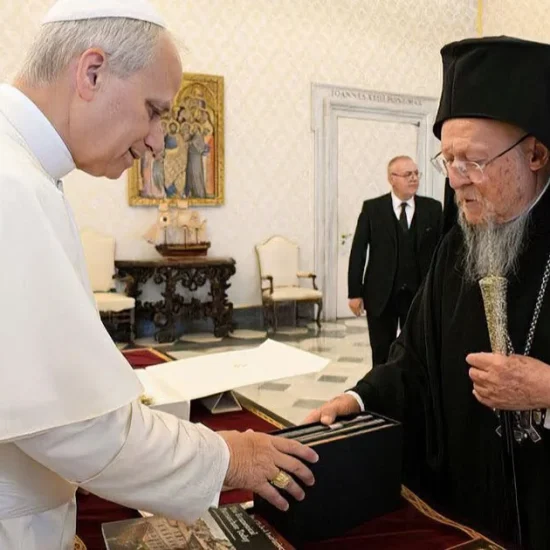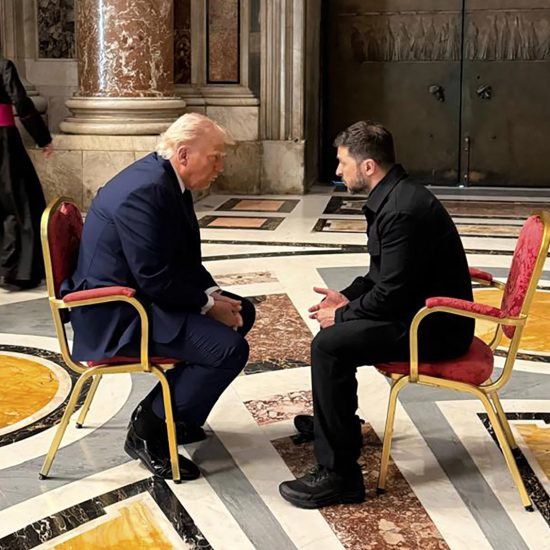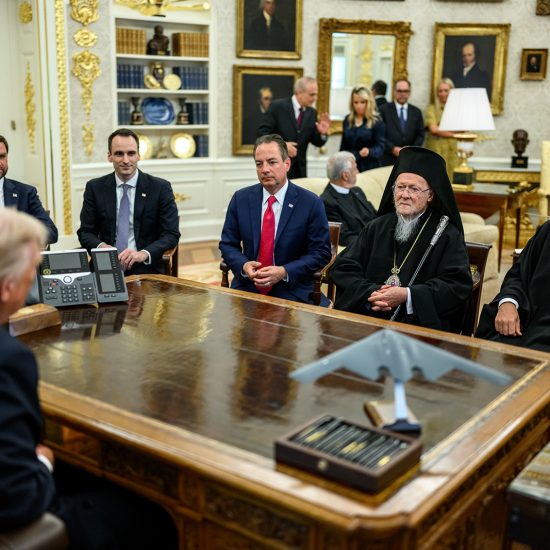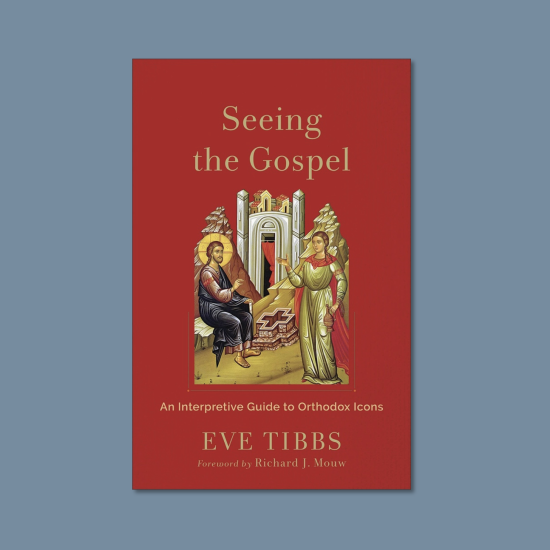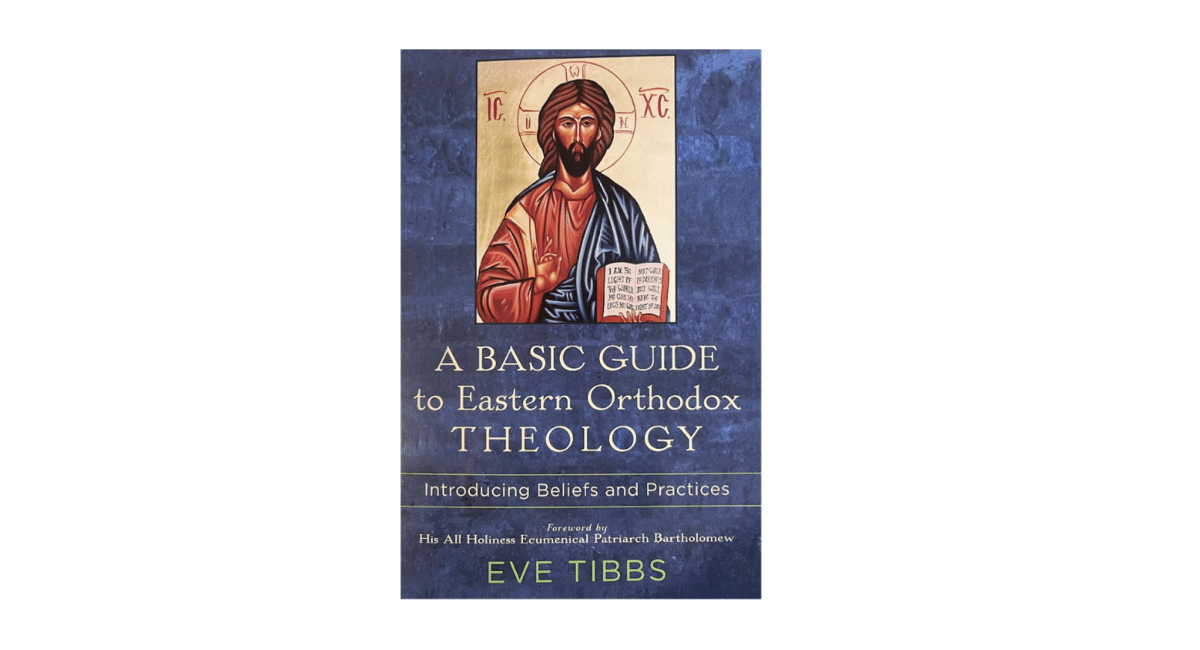
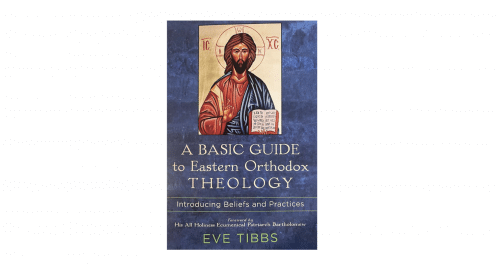
A BASIC GUIDE TO EASTERN ORTHODOX THEOLOGY: Introducing Beliefs and Practices. By Eve Tibbs. Foreword by Ecumenical Patriarch Bartholomew. Grand Rapids, MI: Baker Academic, 2021. Xviii + 199 pages.
For many western Christians, Eastern Orthodoxy is a somewhat exotic form of Christianity. It’s possible that until the Russian invasion of Ukraine, many westerners may have paid little attention to Orthodoxy. Now, as we watch one predominantly Orthodox country invade another of the same tradition, we may wonder how this can be (though to be honest Western Christians have been fighting each other for centuries). While Orthodoxy might still be an unknown quantity to many, between immigration and conversion, there are growing numbers of Orthodox Christians in the United States. In my own community, you will find two Romanian Orthodox churches, a Russian Orthodox, a Serbian Orthodox, a Greek Orthodox, an Antiochian Orthodox, and a Coptic Orthodox church, with other Orthodox churches spread across surrounding communities. These include the Ukrainian Orthodox Church of America (aligned with the Ecumenical Patriarch) cathedral in a nearby community. While immigration has been a strong contributor to this growth, there has been increased conversion, especially among former Anglicans/Episcopalians and evangelicals.

Robert D. Cornwall
Among those who are converting, many are attracted to Orthodoxy’s doctrinal rootage in the ancient church. Others are attracted to the liturgy. What Orthodoxy offers many westerners is a different trajectory from the one that derives largely from Augustine and his heirs (including Aquinas and the Reformers). While ancient roots and liturgy might lead to conversion, for others, who might not be interested in conversion there is a sense of richness in Orthodoxy that is, as I’ve discovered, deepening of one’s spiritual and theological life.
When I was an M.Div. student at Fuller Theological Seminary nearly forty years ago, I encountered a few Orthodox folks, most of whom were converts from evangelicalism. One of those converts ended up being a beloved teacher of Greek at the seminary. While the numbers were few back in the day, they’ve increased dramatically, such that today actual classes are offered in Orthodoxy at Fuller and other Protestant seminaries. In part due to the increased number of Orthodox students, but also due to greater interest in Orthodoxy. Fortunately, there are also increasing numbers of introductory works on Orthodoxy, including books by Orthodox leaders/scholars such as Kallistos Ware and Andrew Louth. Books by leading Orthodox theologians such as Vladimir Lossky, Sergius Bulgakov, Alexander Schmemann, to name just a few who I’ve read of late.
Added to these important contributions to our theological conversation is A Basic Guide to Eastern Orthodox Theology by Eve Tibbs. Tibbs is a Greek Orthodox Christian by birth and continues to serve the Greek Orthodox Church. She also holds a Ph.D. in theology from Fuller Theological Seminary, where she serves as an affiliate assistant professor of theology at Fuller, teaching courses in both western theology and Eastern Orthodox theology. Her book on Eastern Orthodox Theology is an outgrowth of the class she teaches at Fuller. In other words, this is a book written by an Orthodox theologian with Protestants (largely evangelical in orientation) in mind. She has offered readers who might be unfamiliar with Eastern Orthodoxy a basic introduction that is geared to the kinds of questions westerners often ask. Tibbs suggests that A Basic Guide to Eastern Orthodox Theology could be “likened to a tour bus repeatedly circling four areas of interest: Scripture, history, people, and concepts.” (p. 3). That is a good summary of the book. It’s basic but helps the reader gain a better understanding of Orthodoxy before they dive in further. In other words, if you don’t much about Orthodoxy, you might want to read this before reading Lossky, Bulgakov, or Schmemann, to name a few twentieth-century Russian Orthodox theologians who left Russia for the west!
I should note that this particular book carries a foreword by the Ecumenical Patriarch, Bartholomew. Bartholomew, who resides in Turkey, and is in a bit of a tug of war for influence within Orthodoxy with the Russian Orthodox Patriarch, offers this word of insight regarding the book. Rather than focusing on history and institutions, he notes that Tibbs writes from a perspective that is “molded by the author’s experience of the Orthodox sacramental life, its life of worship” (p. xiv). That this book carries his “imprimatur” offers it a degree of authority.
The eight chapters of the book take us from a reflection on “The Orthodox Christian Worldview,” in which Tibbs gives us an overview of how the Orthodox see their connection to the ancient church, along with its place in the modern Christian world. She also covers matters of worship and doing theology as Orthodox Christians. It should be noted that the Orthodox make much use of apophatic theology, recognizing that “words from a finite being will always fall short of expressing the mystery of the infinite God” (p. 24). Thus, the recognition of mystery that evidences itself in the primacy of worship/liturgy.
From the starting point laid out in chapter 1, we move on to other topics, starting with a discussion of the nature of the church in chapter 2. Orthodoxy, as she reminds us, is very much an ecclesial faith. Thus, in this chapter, she raises questions about how the church is structured and governed along with its relationship to the larger church. That concern is continued in chapter 3, which is titled “Communion and Revelation.” Here Tibbs discusses the importance of the ecumenical councils in determining the nature of Orthodoxy. In other words, in Orthodoxy, there isn’t a pope. The patriarchs, including the Ecumenical Patriarch, do not have ultimate power. Bartholomew is considered the first among equals (a position being challenged by the Russian patriarch). In this chapter, she talks about the role of tradition, Scripture, and icons in expressing the church’s theology. When we move to chapter 4, we find a discussion of ministry and leadership. She includes in this chapter a discussion of the ordination of women, which is a contested issue. That discussion does note that Orthodoxy provides for the ordination of women to the diaconate, something that the Roman Catholic Church has yet to do, because, after all, Phoebe is the first female deacon. She also discusses the question of apostolic succession. While the continued succession is important, that must be accompanied by faithfulness to the faith of the church. She writes that “Orthodox Apostolic succession is not only a linear succession of bishops by a succession of the entire baptized eucharistic community in that locale led by and bound to their bishop, who has preserved the Apostolic Faith and who maintained eucharistic communion with other Orthodox bishops and their communities” (p. 72).
Chapter 5 explores Christology, which is central to Orthodoxy. For the forms of Orthodoxy she lifts up, Jesus fully human and fully divine, as understood through Chalcedon. Thus, “although the Church has been able to explain why it is necessary for Jesus to be fully human and fully divine, finite human reasoning can never conceive how it is so” (82). Again, she returns to the centrality of apophatic theology, and the value of faith. Again, liturgy/worship is central to confessing this Christological position.
Chapter 6 explores human creation, including questions of sin, salvation, and ultimate destiny (theosis). Here we see some of the differences between east and west. It is these differences that make Orthodoxy attractive. After all, in Eastern forms of Christianity, there isn’t a doctrine of penal substitutionary atonement. That view developed after the split. Interestingly, she discusses Christology and theological anthropology before she gets to the Trinity (chapter 7). You would think that would come first, but she chooses to conclude these important theological conversations with the Trinity. Putting it at the end doesn’t mean it is less important. According to Tibbs, it is the “central and defining doctrine of Christianity.” She acknowledges that the word Trinity doesn’t appear in Scripture, and yet she also insists that the doctrine is present in Scripture. This doctrine was canonized by the Ecumenical Councils, which have ultimate interpretive authority for the church. For western Christians, it is important to note the absence of the filioque (and the Son) from the definition of the Holy Spirit in the Nicene Creed. I believe they have the high ground on this matter!
Having affirmed the centrality of the Trinity, Tibbs now speaks of Orthodox worship or liturgy. One of the attractions of Orthodoxy is its worship, its liturgy. She notes that this Divine Liturgy seems unchanging and ancient. It’s mysterious (and lengthy), but it represents the heavenly realm on earth. So, you can understand why it’s attractive to many. The value here is that she gives the reader (mostly western Christians) a helpful introduction to the liturgy and the way it’s understood and used in the churches.
Having taken us on a quick tour of the central elements of Orthodoxy, she offers an epilogue, in which she reminds us that this is an introduction. There is much more to be discovered. Nevertheless, here is a starting point for those who are new and inquiring. To whet our appetite, she offers a selection of readings from ancient writings that correlate with each chapter. She also offers a glossary so that we can keep in mind the meaning of important words. She also bolds each word in the glossary the first time it appears in the text. So, if you see a bolded word, you might want to turn to the glossary!
A Basic Guide to Eastern Orthodox Theology fulfills the promise made by its title. It’s basic. It’s introductory. It is also written, as I noted earlier, with western Christians who might be interested in Orthodoxy in mind. That makes it especially accessible and helpful. It serves as a good starting place, which can be followed up with other introductions such as those by Louth and Ware that might not completely have this audience in mind. Thus, I highly recommend it to western Christians interested in Orthodoxy as well as those who seem baffled by Orthodoxy. I think you will be enlightened by the end of the book and ready to check out other books, even ones by Schmemann and Lossky. Concerning Bulgakov, you might need a bit more time, but even his work is worth pursuing once you have the basics down. Ultimately, due to the state of the world and the cause of Christian unity, it is time for western Christians to take seriously the witness of eastern Christians (without making them western Christians). I’m not a convert but my theology has been deeply enriched by my recent engagement with Orthodox theology. May this be true for others!
This review originally appeared on BobCornwall.com.
Robert D. Cornwall is an ordained minister in the Christian Church (Disciples of Christ). Now retired from his ministry at Central Woodward Christian Church (Disciples of Christ) of Troy, Michigan, he serves as Minister-at-Large in Troy. He holds a Ph.D. in Historical Theology from Fuller Theological Seminary and is the author of numerous books including his latest books: Called to Bless: Finding Hope by Reclaiming Our Spiritual Roots (Cascade Books, 2021) and Unfettered Spirit: Spiritual Gifts for the New Great Awakening, 2nd Edition, (Energion Publications, 2021). His blog Ponderings on a Faith Journey can be found at www.bobcornwall.com.


